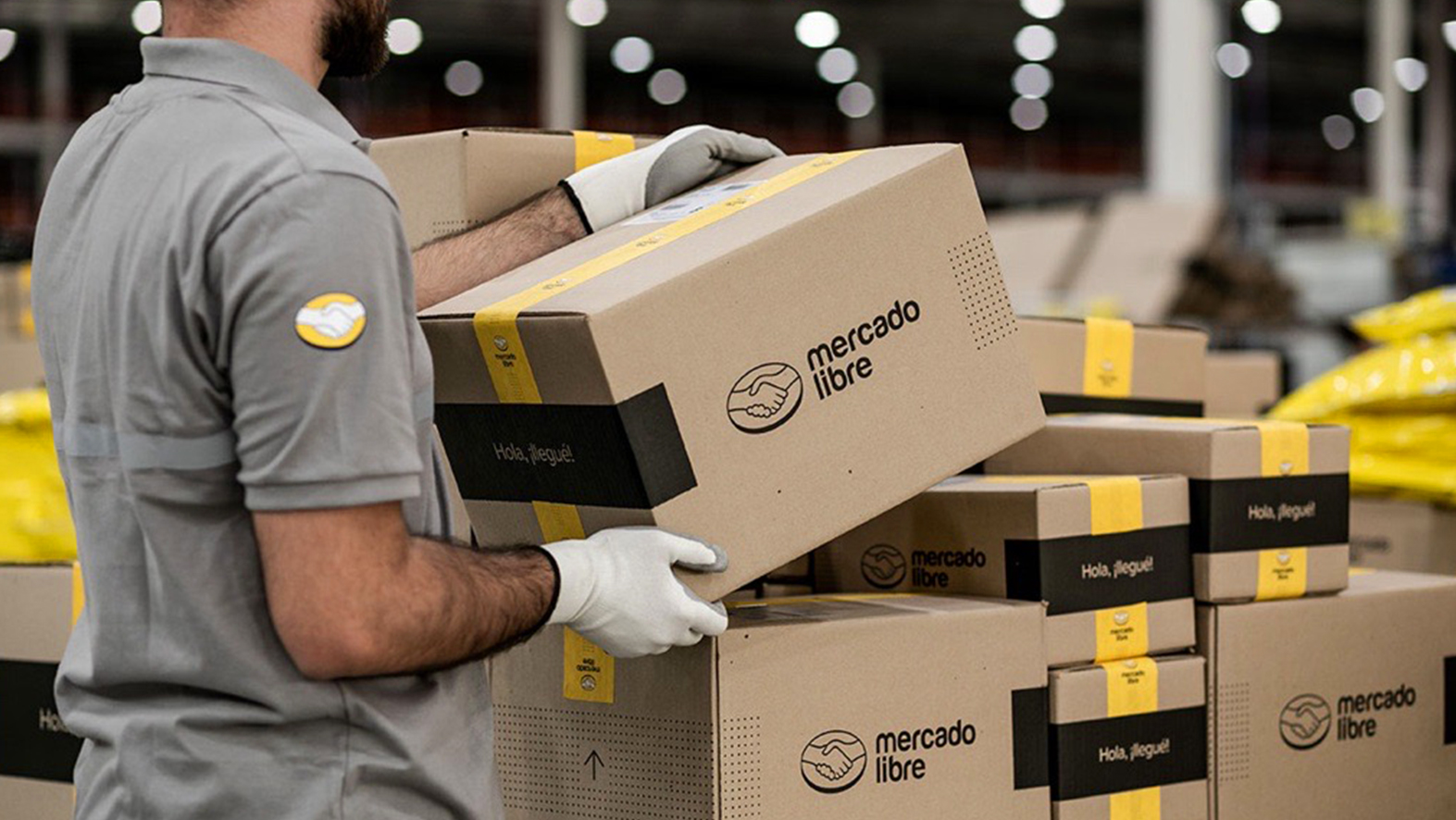Latest Question:
July 11, 2025
What key factor delayed the mass adoption of refrigerators for nearly a century after their invention in 1834?
Power was costly
No safe refrigerant
People preferred ice
No compressor technology
No safe refrigerant
Refrigerators didn’t become common in households until the 20th century largely because there wasn’t a safe, practical refrigerant. Artificial cooling was first demonstrated in 1748 by Scottish professor William Cullen, but it wasn’t until 1834 that American inventor Jacob Perkins built the first functional vapor-compression system. Early refrigeration machines weren’t just bulky and expensive, they also used hazardous substances such as propane as coolants. Without a safe refrigerant for household use, widespread consumer adoption was impractical.
But in 1930, General Motors chemist Thomas Midgley Jr., in collaboration with DuPont, developed the first chlorofluorocarbon (CFC), marketed as Freon. CFCs were non-toxic, non-flammable, and chemically stable, solving the safety issue and enabling mass adoption of refrigerators and air conditioners. GM, which owned Frigidaire from 1919 to 1979, played a key role in commercializing this shift.
Freon wasn’t dangerous to people, but it was dangerous to the environment. In the 1970s, scientists discovered that CFCs were damaging the ozone layer, leading to international action. The Montreal Protocol, signed in 1987, aimed to phase out ozone-depleting substances such as CFCs. In response, DuPont developed alternatives: HCFCs (hydrochlorofluorocarbons), which were less harmful to the ozone but still contributed to global warming, and HFCs (hydrofluorocarbons), which didn’t affect the ozone layer but had high global warming effects. In 2016, the Kigali Amendment to the Montreal Protocol established a global timeline to phase down HFCs, recognizing their impact on the climate. This marked a key shift from just protecting the ozone layer to addressing broader environmental concerns.
Today, the refrigeration and cooling industry faces a dual challenge: meeting growing demand—especially in India and Africa, where nearly 2 billion people still lack access to refrigerators and air conditioning—while reducing the environmental impact of refrigerants. With no perfect solution yet, the search for safer, scalable alternatives continues.
Previous Questions:
July 3, 2025
Which Revolutionary War spy network operating in British-occupied New York used numbered aliases, invisible ink, and dead drops?
Sons of Liberty
Culper Ring
The Brooklyn Boys
Friends of Fraunces Tavern
Culper Ring
The Culper Ring, established in 1778 by George Washington and Major Benjamin Tallmadge, was one of the most advanced intelligence operations of its time. The network operated in and around New York City, then the hub of British military activity, providing Washington with vital intelligence using methods that persist in modern spycraft. To maintain secrecy, the Culper Ring employed a sophisticated system of numerical aliases drawn from a custom-designed codebook. For example, George Washington was 711 and Tallmadge was 721. These numbers were used to sign letters and embed names within coded messages, so that even if correspondence was intercepted, the identities remained concealed. The codebook included more than 700 names, towns, verbs, and common terms, all encrypted with numbers. Some entries were mundane (“gold” = 223), others geopolitical (“New York” = 727), and a few remain mysterious, including 355, translated simply as “lady.”
In addition to code names, the ring relied on invisible ink, known as sympathetic stain, which required heat or a chemical reagent to reveal hidden text. Messages were often hidden in everyday correspondence or delivered via dead drops, such as messages buried in a field or tucked into the heel of a shoe. In some cases, multiple couriers would transport different parts of a message to reduce the chance of full exposure. The ring even embedded messages within letters that seemed to discuss mundane family matters or farming supplies. The network was so discreet that Washington himself rarely knew the real names of some agents.
The Culper Ring uncovered critical British plans, including a surprise attack on French troops in Newport, Rhode Island and a scheme to counterfeit Continental currency. Most notably it exposed Benedict Arnold’s treasonous plot in 1780 to surrender West Point in New York to the British.
As for the codebook, there were only two or three copies of it, but one survives and is housed in the Library of Congress as part of the George Washington Papers, Manuscript Division. One page of the ciphers has been digitized and can be viewed here:
June 27, 2025
Which of the following labels is not part of Sony Music’s current portfolio?
Columbia Records
Arista Records
Epic Records
Def Jam Recordings
Def Jam Recordings
Def Jam Recordings, home to artists such as DJ Khaled, LL Cool J, and Justin Bieber, is part of Universal Music Group. Sony owns Columbia, Arista, and Epic. Sony Music Entertainment is a subsidiary of Japanese conglomerate Sony and one of the Big Three global music conglomerates alongside Universal and Warner Music Group. These three together control more than 75% of global recorded music and publishing.
Sony entered the recorded music business by buying out its partner in CBS Records in 1991 and has made more acquisitions within this division than in any of its others. That 1991 purchase included Columbia, founded in 1889, the oldest existing record label in the world with a roster of artists including Bob Dylan, Beyoncé, Adele, and Bruce Springsteen. Epic, also part of CBS Records, originally launched to house jazz and classical music and became a pop and R&B juggernaut—home to Michael Jackson during the Thriller era. Arista, the brainchild of Clive Davis, helped define 1980s pop and soft rock. It was resurrected in 2018 as Sony’s forward-looking boutique label.
The music conglomerates all operate with similar long-term artist contracts and often include “most favored nation” clauses in licensing deals with platforms such as Spotify and YouTube—meaning if one label secures better terms, the others can match them. This discourages price competition and helps maintain stable margins, while limiting artist mobility through long-term, multi-album contracts. While these companies don’t collude explicitly, their parallel structures and shared incentives often amount to tacit coordination that has drawn increasing scrutiny from US and EU antitrust regulators.
June 20, 2025
James Naismith invented basketball in 1891 but debate remains around its origins. Which is the most commonly cited alternative origin story?
Throwing cabbages in baskets
An ancient hoop game
An English children’s game
A French ball game
Throwing cabbages in baskets
While the official story credits Dr. James Naismith with inventing basketball in December 1891 at the International YMCA Training School in Springfield, Massachusetts, the town of Herkimer, New York, makes a competing claim. According to local accounts, Lambert Will, a teenage director of physical education at Herkimer’s new YMCA, devised a version of the game in 1890. Legend has it Will got the idea while tossing cabbages into a bushel basket at Ausman’s General Store on Main Street. He organized what Herkimer claims was the first-ever basketball game: a matchup between the Herkimer YMCA 9 and the Herkimer Businessmen 9, played on February 7, 1891, followed by a second game against a team from nearby Little Falls.
Supporters of the Herkimer origin cite several historical references, including an 1898 article in the Utica Daily Press mentioning the town had a basketball team by 1891, and a 1940 Herkimer Evening Times piece commemorating a 50th anniversary of the sport’s founding in New York’s Mohawk Valley. That article included testimony from a man who said he had witnessed the first game at the Herkimer Y and offered his 1891 YMCA membership card as evidence.
Meanwhile, in Springfield, Naismith developed his own version of the game using a soccer ball, two peach baskets, and a set of 13 rules he typed up and pinned to the gym bulletin board. He introduced the game to his students on December 21, 1891, an event long recognized as basketball’s official beginning.
There may have been earlier games that resembled basketball. A 1591 book from Frankfurt describes a game played in North America where players threw balls at a high-mounted target made of woven twigs, with prizes for accuracy. In pre-Columbian Mesoamerica, the Maya and Aztec played ollamaliztli, using rubber balls and stone hoops placed high on court walls. Medieval France had “La Soule,” a chaotic team ball game, while 18th century English children played “duck on a rock,” which required players to knock a stone off a platform—an influence Naismith later acknowledged.
June 13, 2025
After Walmart and McDonald’s, which of the following is the third-largest seller of Coca-Cola products globally?
7-Eleven
Carrefour
Tesco
Oxxo
Oxxo
Oxxo, the Mexican convenience store chain, sells more than four million Coca-Cola products daily.
Founded in 1978 in Monterrey, Mexico by beverage manufacturer FEMSA (Fomento Economico Mexicano SA), Oxxo began as a small-format store intended to sell beer made by FEMSA’s brewery division. Today, Oxxo operates more than 21,000 stores across the country (by comparison, 7-Eleven Mexico has fewer than 2,000 stores) and has expanded into other parts of Latin America including Chile, Colombia, and Peru. Oxxo’s stores are small but densely stocked with everyday items including snacks, cigarettes, alcohol, cell phone top-ups—and of course, Coca-Cola products. Mexico has one of the highest per-capita soda consumption rates in the world, and while roughly half of Coca-Cola products in Mexico are sold through traditional “mom and pop” shops, convenience stores account for 15%—of
Oxxo’s dominance in Coca-Cola product sales is not just a function of customer demand or its vast network of stores. It is also a result of FEMSA’s strategic relationship with Coca-Cola. In addition to owning Oxxo, FEMSA owns Coca-Cola FEMSA, the world’s largest independent bottler of Coke products by volume. Coca-Cola operates on a franchise bottling system: it owns the brand and produces the base concentrate, which it sells to regional bottlers. These bottlers—such as Coca-Cola FEMSA—are responsible for manufacturing, packaging, distribution, and retail relationships within their territories, effectively controlling the supply. What makes FEMSA unique, then, is its vertical integration. It not only owns the supply but also a sizeable portion of the retail distribution network.
Unlike many convenience store chains, Oxxo stores are not franchised—they are wholly owned and operated by FEMSA. This gives the company complete control over store operations, pricing, and merchandising strategy down to the individual store. Using transaction-level data, for example, Oxxo tailors inventory and product placement, stocking different brands, beers, cigarettes, and even Coke products based on local preferences.
*By checking “Opt-In Confirmation,” you consent to receive investment updates from Harding Loevner. You can withdraw your consent at any time. Contact us.
June 6, 2025
As of 2023, hospitals commanded the largest share of US health spending by facility type. Which group has the next largest?
Physician practices
Urgent care/outpatient clinics
Behavioral health facilities
Ambulatory surgery centers
Physician practices
Physician practices and clinical services accounted for roughly 16% of US health-care spending in 2023, according to the Centers for Medicare & Medicaid Services. Physician practices deliver the majority of outpatient care across the country but the largest share of health-care spending by facility type—more than 30%—goes to hospitals. As the backbone of the US health-care system, these capital-intensive institutions provide emergency care, inpatient and intensive care, diagnostic services, and surgical procedures, all supported by 24/7 staffing and infrastructure.
Urgent-care centers and outpatient clinics represent another 3 to 4% of spending. These sites appeal to both patients and payers by offering convenient, cost-effective care for low-acuity conditions, chronic disease management, and routine diagnostic services. Behavioral-health facilities make up about 4% of spending and primarily serve individuals with psychiatric disorders, substance-use conditions, and co-occurring medical issues. Meanwhile, ambulatory surgery centers (ASCs) account for roughly 2% of health-care spending by facility type. With more than 6,000 Medicare-certified ASCs performing tens of millions of procedures each year, they have become the preferred setting for elective surgeries. Compared to hospital outpatient departments, ASCs typically offer lower costs, faster turnaround times, and higher patient satisfaction.
The operators of these facilities include publicly traded corporations, nonprofit health systems, private equity-backed platforms, and government-run entities. Market fragmentation remains high, although consolidation has accelerated in recent years as operators seek scale, referral alignment, and cost control.
May 30, 2025
Which of the following components has the greatest influence on your FICO credit score?
Length of credit history
New credit inquiries
Payment history
Credit mix
Payment history
Payment history is the most important factor in a FICO score, as a track record of on-time payments is considered the strongest indicator of future behavior. Delinquencies can remain on a credit report for years and meaningfully drag down a score.
The FICO score, created by Fair Isaac Corporation in 1956, is a statistical model used to predict loan-repayment probability. FICO scores range from 300 to 850 and are used by nearly every US lender to assess credit risk. The score is based on five components:
- Payment history (35%): whether credit obligations have been paid on time.
- Amounts owed (30%): how much available credit is currently being used.
- Length of credit history (15%): how long accounts have been active.
- Credit mix (10%): diversity across types of credit (e.g., cards, mortgages, auto loans).
- New credit inquiries (10%): how frequently new credit has been applied for.
Adopted by banks in the 1960s and 1970s, FICO scores became integral to credit reports by the 1980s. The score’s importance was solidified by US banking regulators and agencies such as the Federal Housing Finance Agency (FHFA), which mandated its use for assessing risk in bank loans and government-backed mortgages. Today, FICO scores are used in virtually all consumer lending decisions—mortgages, auto loans, credit cards, and personal loans—and are distributed through the three major credit bureaus: Experian, Equifax, and TransUnion. Fair Isaac licenses its scoring software in more than 30 countries, with nearly 50% of its scoring-division revenue coming from outside the US.
May 23, 2025
In the 1960s and ‘70s, pharmaceutical companies tried to get into the beauty business. Which of these unlikely deals actually happened?
Merck and Revlon
Eli Lilly and Elizabeth Arden
Squibb and Estee Lauder
Pfizer and Max Factor
Eli Lilly and Elizabeth Arden
Eli Lilly’s 1971 acquisition of Elizabeth Arden was emblematic of a broader trend in the 1960s and 1970s of major pharmaceutical firms and large conglomerates entering the fast-growing beauty and personal- care sector to diversify and access high-margin categories. Arden, one of the more iconic American beauty houses, had a global reputation for skin care, cosmetics, and of course distinctive red doors. Lilly, an innovative company flush with patents and profits in the post-war period, believed it could enhance Arden’s product quality through its formidable R&D capabilities. However, the theory unraveled in practice as Lilly’s deliberate, scientific approach clashed with the fast-moving retail and marketing-driven ethos at Arden. Lilly eventually sold Arden to Faberge in 1987.
Pfizer did not buy Max Factor but in 1963 it did purchase the historic French fragrance brand Coty, hoping to marry its chemical capabilities with Coty’s innovation in scents. However, it also had challenges combining scientific backing with retail brands; after years of stagnant performance, Pfizer sold Coty to Benckiser in 1992 (which merged it with its own brands to create the modern Coty). Squibb bought Lentheric, a French perfume and cosmetics house, but the brand faded and did not create value. Bristol-Meyers was one of the few success stories in the conglomerates’ quest for dominance in the beauty sector. It purchased Clairol, a pioneer in in-home hair coloring, in 1957. The brand was part of Bristol-Meyers for decades until it was sold to Procter & Gamble in 2001.
May 16, 2025
The Buttonwood Agreement, signed on May 17, 1792, organized securities trading in New York City. What was the first listed stock?
Tontine Coffee House
First Bank of the US
US Steel
Bank of New York
Bank of New York
The Bank of New York was the first stock listed for sale under a compact signed on May 17, 1792, between 24 merchants and brokers in New York City. The businessmen usually met under a buttonwood tree on Wall Street, and this compact came to be called the Buttonwood Agreement, which marked the informal founding of what would become the New York Stock Exchange.
The agreement was a direct response to the Financial Panic of 1792, sparked by unscrupulous speculators who tried and failed to corner the bond market. When the speculators defaulted, it resulted in a run on the banks and panic selling of securities. To bring order to the securities business, brokers convened secretly at a hotel and committed to two key principles: to trade securities exclusively among themselves, excluding competitive outside dealers, and to charge a fixed commission of 0.25%, preventing price undercutting. Although the agreement was succinct (just two sentences), it established the foundation for organized capital markets in the US.
Other securities traded early in the life of the exchange included US government war debt and stock in newly established institutions such as the First Bank of the United States. The Tontine Coffee House, on the corner of Wall and Water streets, wasn’t a publicly traded stock but was an important part of Buttowood lore. There wasn’t enough space for all of the founding brokers to conduct business under the buttonwood tree so they relocated to Tontine Coffee House. Securities trading at the coffee house continued until 1817, when the burgeoning stock market was formalized as the New York Stock and Exchange Board, the precursor to the NYSE. US Steel was formed in 1901 by JP Morgan through the consolidation of Carnegie Steel, Federal Steel, and National Steel. It was the first company to reach US$1 billion in market capitalization. The Bank of New York, incidentally, still exists through its modern successor, BNY Mellon.
May 9, 2025
In the 1980s, the French government imposed what non-tariff barrier to limit the importation of Japanese VCRs into the local market?
Strict quality controls
A remote customs location
Retail shelf-space quotas
Japanese visa limits
A remote customs location
In 1982, the French government mandated that all Japanese VCRs entering the country undergo customs inspection in Poitiers, a small inland town 210 miles southwest of Paris, distant from major ports. The faraway office employed only two customs agents and a total of nine people, handling inspections with such detail that few Japanese VCRs (of the 25,000 units being imported each week) reached the shelves of French retailers. Though it was not framed as a protectionist policy, the decision to force cumbersome inspections at a tiny customs depot in an inconvenient location functioned as a non-tariff barrier by creating extensive delays and logistical hurdles.
At the time, nine out of ten VCRs sold in France were Japanese. Companies such as JVC, Sony, and Panasonic led the VCR market while French and American firms such as Thomson Brandt and RCA struggled. The controversial customs policy was an attempt to reverse that imbalance and became known as the “Second Battle of Poitiers,” a reference to a famous battle in 732 AD when French warlord Charles Martel stopped the invading Saracen army. The customs code assigned to identify Japanese goods in Poitiers—732—even seemed to make the point. Japanese manufacturer Hitachi eventually took out a full-page ad in French papers that stated, “We are not Saracens.”
While the move was technically legal, it was widely viewed as a violation of the spirit of fair and open trade and became a symbol of the broader friction between Western countries and an emerging Japan during the 1980s. The French government lifted the Poitiers policy a year later; the incident helped catalyze discussions around strengthening global trade governance, eventually influencing the creation of more robust dispute-settlement mechanisms under the World Trade Organization in the 1990s.
May 2, 2025
The first formal depository receipts were issued in 1927 for which company?
Unilever
The Suez Canal Company
Selfridge’s
Air Liquide
Selfridge’s
The first formal and legally recognized depository receipt–a security that allows people to purchase shares in foreign companies through local exchanges—was created and sold in 1927 on the New York Curb Exchange (which would later become the American Stock Exchange) for Selfridge’s, the British department store founded by American entrepreneur Harry Gordon Selfridge. There are anecdotal references suggesting that shares of the Suez Canal Company may have been available to US investors in a depository format earlier than 1927, but those instruments lacked a formal regulatory framework and legal structure.
The invention of depository receipts marked a turning point in international investing for Americans. They offer a streamlined and accessible path to investing in companies located abroad and solve key logistical challenges that US investors face in buying foreign equities. Today there are two main types of depository receipts: American depository receipts (ADRs), available only in the US and issued by companies that partner with a US bank to make them available, and global depository receipts (GDRs), which operate like ADRs but allow companies to list shares in multiple foreign markets. GDRs are commonly used by developed-markets investors to invest in companies domiciled in emerging markets. In the US, ADRs are a well-established component of capital markets, with more than 2,000 programs in place representing more than 70 countries. According to Bank of New York Mellon, the use of ADRs can save US investors between 10 and 40 basis points of charges annually related to the trading and custody of foreign securities.
Unilever established its ADR in 1988, Air Liquide established a French DR in 1928 but did not establish an ADR until 2007, and Suez Group, the successor firm to the Suez Canal Company, recently established an ADR in 2020.
April 25, 2025
NVIDIA, which just started selling its newest Blackwell chip, is already planning a successor chip named after Vera Rubin, who was:
A teacher
An astronomer
A mathematician
An oceanic cartographer
An astronomer
Dr. Vera Rubin (1928-2016) was an American astronomer known for her groundbreaking work on galaxy rotation curves, which provided some of the first compelling evidence for the existence of dark matter. While studying how stars orbit within galaxies, Rubin found that stars at the edges of galaxies rotated just as fast as those near the center, when according to Newtonian physics and visible mass outer stars should move more slowly. This suggested the presence of a vast amount of unseen mass—dark matter—holding galaxies together, an idea that has transformed scientists’ understanding of the composition of the universe.
NVIDIA often names its semiconductors after prominent scientists, mathematicians, and computer scientists. Its Tesla chip (2006) was named after the inventor and electrical engineer Nikola Tesla (yes, a car company also bears his name). The Turing chip (2018) was named after Alan Turing, a foundational figure in artificial intelligence and computer science; the Ampere chip (2020) was named after Andre-Marie Ampere, a pioneer of electromagnetism; and the Hopper chip (2022) was named after Grace Hopper, a computer-programming pioneer and inventor of the first compiler. The names are not entirely random: the Turing chip was focused on intelligent inference, Ampere on electric performance, and Hopper on programming breakthroughs.
The Rubin chip will be the successor to NVIDIA’s newest and most advanced chip, the Blackwell chip, which the company launched in late 2024. It was named after statistician and mathematician David Blackwell, the first Black scholar inducted into the National Academy of Sciences, who is known for his work in probability theory, game theory, and information theory.
April 17, 2025
When was the first elevator suitable for passenger use successfully demonstrated?
1740s
1820s
1850s
1880s
1850s
The first elevator suitable for passengers was successfully demonstrated in 1854 by Elisha Otis at the Crystal Palace Exhibition in New York. Rudimentary elevators had been used as far back as the third century BCE to lift goods in factories, warehouses, and elsewhere—Rome’s Colosseum had 25 of them. But they were too dangerous for passengers due to the risk of the rope breaking.
Otis overcame that by inventing a safety brake that would stop the elevator from falling if the hoisting rope snapped. During his demonstration at Crystal Palace, Otis stood on an elevated platform and had the supporting rope cut. Instead of plummeting to the ground, the platform was held securely in place. Shortly after his demonstration, Otis founded the Union Elevator Works, later renamed the Otis Elevator Company, and in 1857 the company installed the first passenger elevator inside a New York department store called E.V. Haughwout & Co.
Today, elevators, escalators, and moving sidewalks transport more than 2 billion people every day. Otis is still a leader in the industry, which has high barriers to entry due to strict safety standards. Four companies—Otis, Kone, Schindler, and TK Elevator—comprise more than half the market by value. Otis has a greater presence in the US, Kone was the first to enter the Chinese market, and Schindler is stronger in Europe. TK Elevator was spun out of Thyssenkrupp in 2020.
April 4, 2025
Which of the following behavioral tendencies best explains why investors panic in a downturn?
Recency bias
Disposition effect
Myopic loss aversion
Availability bias
Myopic loss aversion
Myopic loss aversion is a fusion of two well-documented behavioral phenomena: loss aversion, when the pain of losses outweighs the pleasure of equivalent gains, and narrow framing or myopia, which is a tendency to focus on short-term outcomes. A cycle of panic begins as the investor constantly check the performance of their portfolio, making them acutely aware of the short-term performance. Because those losses are psychologically more painful than gains, even modest declines can come to feel severe, causing irrational decisions such as selling during a short-term downturn even if fundamentals haven’t changed.
Recency bias refers to placing too much weight on recent events when forming expectations about the future. Recency bias does shape expectations during volatility (“things are bad now, so they’ll stay bad”) but it doesn’t fully explain the emotional decision to act. Disposition effect describes the tendency of investors to sell assets that have appreciated (realizing gains) while holding onto losing investments (avoiding realized losses) and is caused more by a desire to feel successful and avoid admitting a mistake. While it doesn’t perfectly align with panic selling in a downturn, it can be relevant in how investors choose which positions to sell. Availability bias occurs when people rely on information that is the most readily available rather than that which is most comprehensive or relevant.
In volatile markets, instinctive responses can be the biggest challenge. Investors who recognize these behavioral traps and build investment processes to counteract them are far more likely to stay disciplined and capitalize on the inevitable recoveries.
March 28, 2025
Where was the oldest known device used to restrict access, known today as a lock, found?
Rome, 1st century BCE
China, 6th century BCE
Egypt, 10th century BCE
Mesopotamia, 20st century BCE
Mesopotamia, 20st century BCE
The oldest known example of a lock, a basic wooden bolt lock discovered in the ancient Mesopotamian kingdom of Nineveh, dates to around 2000 BCE.
Lock technology evolved steadily over the centuries as an entire industry grew up around it. Roman engineers introduced warded locks (with fixed internal barriers) that restricted access based on the shape of the key, while at the same time lock makers during the Tang and Song dynasties developed early versions of puzzle and spring-loaded locks. Through the medieval period, locksmithing became a skilled trade across Europe and Asia, with tradesman and engineers building ornate, puzzle-like locks that balanced function and craft. The Industrial Revolution of the 18th and 19th centuries further transformed the industry due to advances in machine tools and precision engineering that allowed for production for standardized lock mechanisms at a mass scale.
Today, companies in the locks industry don’t just sell locks, but also door hardware, entrance and access control systems, and related services. About two-thirds of industry sales are commercial or institutional, with the balance of sales being residential products. The top three companies—Assa Abloy, Allegion, and Dormakaba Holding—command around 30% market share, having consolidated the industry through acquisitions over the past two decades. These companies operate globally though Sweden’s Assa Abloy has both the widest international reach and the broadest range of product offerings. The leading global lock companies are currently integrating mechanical security with digital technology, producing electronic, biometric, and smart locks that connect with mobile devices, home automation systems, and cloud-based security platforms.
March 21, 2025
Why did Guinness Brewery create its famous Book of World Records?
To boost Irish achievements
To track beer consumption
To document brewing history
To promote its brand
To promote its brand
The Guinness Book of World Records was created to promote the Guinness beer brand in pubs. Sir Hugh Beaver, the Guinness Brewery’s managing director, found himself in a debate during a hunting trip about the fastest game bird in Europe. When he realized there was no reference book to settle such questions, he saw an opportunity to create one–particularly one that could be used in pubs where Guinness was served. Beaver thought a book of verifiable records would reinforce Guinness’s association with lively conversations and social gatherings.
He hired Norris and Ross McWhirter, twin brothers known for their fact-finding expertise, to compile the first edition. Published in 1955, it was originally a promotional giveaway to pubs serving the beer. It quickly became a bestseller and evolved into the world’s most famous authority on record-breaking achievements. But the first edition, nor any subsequent edition, didn’t answer the question that inspired Beaver to create the book (the most likely answer is the red-breasted merganser).
Guinness Brewery was founded in 1759 in Dublin by Arthur Guinness, who reportedly had loyalist tendencies and was once accused of being a British spy before the 1798 rebellion against the Crown. The stout that Guinness created is distinct in appearance due to its nearly black color topped with a white velvety foam. Proper pouring is essential to achieve the optimal balance of body, head, and lacing in a glass, with numerous social media accounts dedicated to the art of pouring Guinness correctly (and incorrectly).
Guinness Brewery became a public company in 1886 and merged with Grand Metropolitan in 1997 to form Diageo, a British multinational that is among the world’s largest producers of spirits and beers. Despite declining alcohol sales worldwide, demand for Guinness remains stout. Its growing popularity (with a 20% increase in sales in the UK in 2024) can be attributed to its recognizability on social media amid a plethora of pale lagers, as well as the growing appeal of Guinness 0.0, a non-alcoholic version. Towards the end of last year, Diageo implemented purchase limits for pubs in the UK due to exceptionally high consumer demand for Guinness.
March 14, 2025
Which one of these cars does not currently hold a lap record at the famed Nürburgring Nordschleife track:
Audi RS 3, compact
BMW M4 CSL, mid-range
Porsche Cayenne, SUV
Porsche 911 GT2, sportscar
Porsche Cayenne, SUV
In 2021, the Porsche Cayenne Turbo GT set the lap record for an SUV at Nürburgring’s Nordschleife track with a time of 7:38.925 (you can watch the video here). Three years later, however, the Audi RS Q8 broke that record with a time of 7:36.698.
Holding the record on the track, even if only temporarily, is a difficult achievement. Nürburgring, which opened in 1927, is located in Germany’s Eifel mountains and is considered one of the most demanding racetracks in the world, nicknamed “The Green Hell” by racing legend Jackie Stewart due to its challenging turns and the dense forests that surround it. It was a regular part of Formula One’s calendar until 1976 when Ferrari driver Niki Lauda suffered a near-fatal crash at the track. Major automobile manufacturers continue to use the Nürburgring Nordschleife (“North Loop”) track extensively. With 154 corners, substantial elevation changes (more than 1,000 feet), and varied road surfaces, the track’s combination of high-speed straights and tight, technical turns makes it effective in assessing vehicles’ chassis balance, suspension tuning, braking, and aerodynamic efficiency.
But a record at the Nürburgring isn’t the only thing these two cars have in common. Both utilize similar twin-turbocharged 4.0-liter V8 engines, though they integrate that engine differently. Another thing the two cars: both manufacturers are owned by Volkswagen.
Audi is directly owned by Volkswagen, but Porsche’s relationship is more complex. Porsche AG, the car manufacturer, is owned by Volkswagen. Meanwhile, Porsche Automobil Holding SE (Porsche SE), a separate entity controlled by the Porsche and Piech families, holds a significant stake in Volkswagen: 32% ownership and 53% voting power. That voting power is diluted by a law that gives Lower Saxony, Germany’s second largest state and a minority shareholder, veto power. This is due to the “Volkswagen Law,” drafted to preserve regional interests (namely jobs and factories in Germany) and ensure the company will not fall victim to hostile takeovers. Thus Porsche SE, the holding company, indirectly controls Volkswagen, which directly controls Porsche AG, the car company.
March 7, 2025
Which of these energy drinks has the most caffeine?
Rockstar Xdurance
Red Bull, original
Monster, original
Ghost Energy x Swedish Fish
Rockstar Xdurance
Rockstar Xdurance has the highest caffeine content among those listed, packing 300 milligrams into a 16-ounce can. This makes it one of the highest-energy energy drinks, significantly stronger than Ghost Energy x Swedish Fish (200 mg), Monster original (160 mg), and the drink that started the energy-drink craze in the US, Red Bull original (148 mg). Despite its lower caffeine content, Red Bull remains the market leader, and publicly traded Monster is the world’s second largest brand. Together, they have a combined 50-70% market share in many countries around the world; by size, the energy drink market is around US$73 billion in sales and comprises around a mid-single digits percentage of overall global beverages.
The soft drink industry is mature, growing 3-4% in sales each year. The energy drink segment has been growing faster, averaging 7-10% growth a year, due to their popularity with endurance athletes, fitness aficionados, and even gamers. Although Red Bull and Monster dominate the market, niche brands such as Ghost Energy and Bang Energy are rapidly gaining popularity. However, with growth comes scrutiny—some countries, including France, Denmark, and Norway, have restricted energy-drink sales due to concerns over excessive caffeine consumption.
While energy drinks are an increasingly popular source of caffeine, coffee still accounts for the largest share of caffeine consumption; in the US it is nearly 70%. A 16 oz. Starbucks Pike Place Roast coffee contains around 310 mg of caffeine, making it more potent than Rockstar Xdurance. Meanwhile, mainstream sodas such as Coca-Cola (34 mg per 12 oz.) and Mountain Dew (54 mg per 12 oz.) contain significantly less caffeine than energy drinks.
February 28, 2025
Which country introduced the first modern protective tariff system to support domestic industries?
UK
France
Prussia
Portugal
Prussia
Prussia developed the first coherent, modern protective tariff system to strengthen its domestic industry. Frederick William I (1713 – 1740) and his son Frederick the Great (1740 – 1786) implemented tariffs to support local industries, particularly textiles, porcelain, and iron work. The measures helped reduce reliance on imports and promoted industrialization. In the early 19th century, Prussia also played a key role in the Zollverein (1834) a customs union that later helped to unify German economic policy.
The use of tariffs can be traced back as far as the third millennium BCE, and other European countries used tariffs before the Prussians. In the UK, the Navigation Acts (1651-1849) restricted foreign ships from engaging in trade with British colonies, essentially acting as tariffs. The French also embraced protectionist policies in the 17th century. What made the Prussian tariffs different was that they were specifically implemented to foster domestic industries, rather than just control trade. Under the new Prussian tariff system, local industries thrived and helped Prussia become an economic force on the Continent. Britain, France, and Portugal all eventually adopted these sorts of tariffs, and the 18th century is generally regarded as a turning point in economic policy as nations moved from mercantilist trade restrictions to more structured tariff systems.
February 21, 2025
Under which of the following presidents did the US Dollar Index fall the most?
Bill Clinton
Donald Trump (first term)
Richard Nixon
George W. Bush
George W. Bush
The US Dollar Index (DXY) fell nearly 25% during the administration of President George W. Bush (2001-2009), according to Visual Capitalist. It also fell during President Donald Trump’s first term (2017-2021, down 10%) as well as under Richard Nixon (1969-74, down 16%). The dollar rose 22% under President Bill Clinton (1993-2001).
The DXY quantifies the value of the US dollar relative to a basket of six currencies from key US trading partners: the euro, Japanese yen, British pound, Canadian dollar, Swedish krona, and Swiss franc. The dollar index was established in March 1973 following the dissolution of the Bretton Woods system– which was based on a fixed exchange rate tied to gold–during the Nixon administration. Since then, the dollar index has undergone only one modification despite the increasing significance of trading partners such as China, Mexico, South Korea, and Brazil. In 1999, some of the original European currencies were replaced by the euro upon its introduction.
In 1985, the dollar index surged to record highs during Ronald Reagan’s presidency when the federal funds rate reached 18%. Such elevated rates made holding US dollars more appealing, an appeal that was bolstered by the relative strength of the US economy. The rapid appreciation of the dollar also contributed to the substantial trade deficit of that period—American goods became more expensive while imports were relatively inexpensive. Conversely, the dollar reached record lows in 2008 in the aftermath of the global financial crisis. At the end of 2008, the Federal Reserve reduced rates to near zero as the economy cratered.
Since the start of 2025, movements in the US dollar appear particularly sensitive to news on tariffs. The dollar initially strengthened amid tariff threats against Canada, China, and Mexico before falling upon their suspension.
February 14, 2025
The Six Little Dragons, a group of top Chinese startups, are based in which city?
Beijing
Shenzhen
Hangzhou
Shanghai
Hangzhou
The Six Little Dragons, some of the most prominent Chinese startups today, are all based in Hangzhou. The hottest of these six is DeepSeek, which captured global attention last month after the company launched R1, a cost-effective AI model rivaling those from OpenAI and Google. The other Little Dragons include humanoid-robot firms Unitree and Deep Robotics, brain-machine interface innovator BrainCo, 3D interior-design software developer Manycore, and Game Science, a video-game studio that publishes the popular Dark Myth Wukong. Local authorities in Hangzhou, best known as the headquarters of Alibaba, first mentioned the grouping in a new-year’s letter to the local business community last month.
That the Six Little Dragons are located in Hangzhou could indicate that the city is becoming a new hub for innovation. In addition to Alibaba, Hikvision is based there as well as industrial firms such as Shuanghuan (gears), Sanhua Intelligent Controls (thermal components), Hengli Hydraulic (pumps and hydraulics), Geely (electric vehicles) and Silergy (semiconductors). In addition to the city’s government-backed industrial parks, which can offer rental subsidies and other incentives to lure companies, the local universities have also contributed to the rise of tech firms in the city. Three of the Little Dragons’ founders are alumni of Zhejiang University. As of September 2024, Zhejiang had the fourth-highest number of graduates who are executives at Chinese AI startups, trailing Tsinghua University and Peking University in Beijing and Shanghai Jiao Tong University.
February 7, 2025
The top four cognac houses produce what percent of the world’s supply by value?
30%
50%
70%
90%
90%
Cognac is a form of brandy, which is made by distilling wine. The four major cognac “houses”—Hennessy (owned by LVMH), Martell (owned by Pernod Ricard), Rémy Martin (owned by Rémy Cointreau), and Courvoisier (owned by Campari)—produce nearly 90% of the world’s supply of the spirit by value, and 82% by volume. This makes cognac one of the most consolidated segments in the spirits industry, which tends to be highly brand-centric. Producers sell premium-priced products made from commodities, with rivalry amongst the main industry participants manifesting primarily through brand promotion and signaling of status. For example, cognac has for years featured prominently in rap songs, with Hennessy being miles ahead of the other brands in the number of references. It is probably therefore not just a coincidence that Hennessy is the top-selling brand of the four.
The key reason for high concentration in cognac isn’t just name recognition in pop culture; rather, it is French regulations. Brandy can be sold as cognac only if it meets several criteria. It must be produced from specific grape varieties grown only in the area around the town of Cognac. It must be double distilled in traditional copper Charentais stills, and producers may distill only between November 1st and March 31st following the harvest. The spirit must then be aged in French oak for a minimum of two years. These sourcing and aging requirements create significant barriers to entry. Aging increases capital requirements as producers must buy the distilled wine known as eau-de-vie and barrels at least two years before being able to sell any of it as cognac. In addition, the major cognac producers must lock up significant raw material supply. They do not buy grapes on the open market but buy most of their eau-de-vie through long term contracts from grower/distillers—necessitating deep pockets, scale, and the ability to carry expensive inventory for long periods of time.
January 31, 2025
All of the following terms refer to seasonal winds in specific locations except:
Elephanta
Pampero
Cape Doctor
Firenado
Firenado
A firenado is a whirlwind induced by fire or ash and is not specific to a location, whereas the other terms listed are specific to a place and a particular time of year. An elephanta is a strong southerly or southeasterly wind that blows on India’s Malabar coast during September and October, usually marking the beginning of the southeast monsoon season. A pampero is a blast of cold air coming from the west, southwest, or south on the pampas (grasslands) of South American countries such as Argentina and Uruguay. These winds are most common in winter (between May and August) and are often violent. Pamperos often mark a break in the extreme heat and humidity of summer. A cape doctor is the name of strong, dry southeasterly winds which blow on South Africa’s coast during its summers, from late September to March. The name comes from an old belief that these winds blow pollution and disease away from major cities like Cape Town.
January 24, 2025
Which car is the most American-made, as ranked by the Kogod Made in America Auto Index?
Lincoln Corsair
BMW X7
Honda Passport AWD
Tesla Model 3
Tesla Model 3
According to the 2024 Kogod Made in America Auto Index, the Tesla Model 3 ranked as the “most American-made” car. Other Tesla vehicles nabbed the second (Model Y and Model Y Long Range), third (Cybertruck) and fourth spots (Models S and X, which tied for fourth in a five-way tie with several models of the Ford Mustang GT). The Honda Passport ranked fifth while Ford’s Lincoln Corsair ranked tenth. The BMW X7 was the least American in this group of answers, though it was by no means BMW’s least American car. That distinction went to the BMW 7 series, which shared the lowest rank with models made by Volvo, Mazda, Toyota, Subaru, Porsche, Polestar, Kia, Mercedes, Jaguar Land-Rover, and others.
The study is conducted annually by a professor at American University’s Kogod School of Business who evaluates more than 500 car models on their country of origin and a half dozen other factors, including physical attributes of the vehicle and “unseen” criteria such as the locus of R&D and parent company’s domicile. Among other sources of data, the study relies on information provided under the American Automotive Labeling Act of 1994 (AALA), which requires all cars sold in the US market to specify on the vehicle the percentage of US and Canadian parts, the country of origin for the engine and transmission, and the location of final assembly.
January 17, 2025
Which of the following was named 2024 Breakthrough of the Year by the journal Science?
A safer RNA-based pesticide
An injectable HIV drug
A permanent magnetic material
Spatial proteomics
An injectable HIV drug
Lenacapavir, an injectable HIV drug that protects against that virus for six months at a time, was named 2024 Breakthrough of the Year by Science. In two separate trials, the drug demonstrated efficacy rates of 100% and 99.9% in protecting against HIV when used as a pre-exposure prophylaxis. Although the success rates are impressive, the journal recognized lenacapavir for what it characterized as a “research advance.” Unlike traditional drugs, lenacapavir targets the capsid proteins of the virus, which form a stable and flexible lattice of molecules around viral genetic material. The drug functions by making HIV capsids rigid, hindering their ability to enter the nucleus of a healthy cell and deliver the viral payload. This effectively blocks the formation of new viral particles and prevents infection. Since capsids are unique to each virus, the technology behind lenacapavir could aid in developing drugs to prevent the transmission of other viral diseases.
This isn’t the first time an HIV-related drug has been named Breakthrough of the Year. Researchers were awarded the distinction in 1996 for showing that powerful cocktails of drugs could fully suppress HIV and stave off the development of AIDS. And in 2011, a different set of researchers won for finding that treated individuals whose virus is suppressed rarely infect others, a phenomenon known as “treatment as prevention.”
As for the other answers, two were Breakthrough runners up. The RNA-based pesticide targets specific genes in pests, making it safer and more effective than current chemicals. The first pesticide product made with RNA technology focuses on the Colorado potato beetle, which is resistant to chemicals and causes nearly half a billion dollars in crop losses worldwide annually. The other runner-up was the identification of an altermagnet, a third type of magnet that combines the features of the two other types—ferromagnets and antiferromagnets—in a persistent magnetic state. This new altermagnet has properties that could be important in next-generation magnetic memory technology called spintronics. The last choice, spatial proteomics, was named Method of the Year 2024 by Nature, for the impact the technologies—which studies how proteins are distributed in cells and tissues—have on the understanding of the organization, structure, and function of complex tissues. This is particularly relevant for global tissue atlas projects, which aim to enhance understanding of disease onset and progression by providing precise 3D molecular mappings and data on cell types, states, and interactions.









